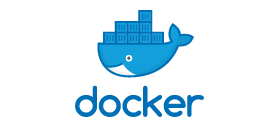Containerd and Docker are both tools for managing containers, but they have some significant differences in terms of functionality and objectives.
Containerd is a lightweight container runtime that focuses on providing the essential functionalities of container lifecycle management, such as creating, running, stopping, and destroying containers. It also supports container image management and configuration of networks and storage.
Docker, on the other hand, is a more comprehensive container platform built on top of containerd, offering additional features such as:
- Building and managing container images
- Creating and managing container orchestration
- Integration with other container services
- A command-line interface and graphical user interface
In short, containerd is a basic tool for managing containers, while Docker is a more complete container platform designed for building, running, and managing containerized applications.
The following table summarizes the key differences between containerd and Docker:
| Feature | Containerd | Docker |
|---|---|---|
| Primary Function | Container Runtime | Container Platform |
| Functionality | Create, run, stop, destroy containers; manage container images; configure networks and storage | Build and manage container images; create and manage container orchestration; integrate with other container services; provide command line and graphical user interfaces |
| Size | Lightweight | Larger |
| Complexity | Simpler | More complex |
| Target Audience | Developers, Operations Staff | Developers, Operations Staff, Business Users |
When to Use Containerd?
- You need a lightweight container runtime.
- You only want to utilize the basic functionalities of containers.
- You are building your own container platform.
When to Use Docker?
- You need a more comprehensive container platform.
- You need to build and manage container images.
- You need to create and manage container orchestration.
- You need to integrate with other container services.
- You require a command-line interface or graphical user interface.
The Relationship Between Containerd and Docker
Docker actually uses containerd as its underlying container runtime. This means that when you use Docker, you are indirectly using containerd. However, Docker also provides many additional features that are not available in containerd.
Conclusion
Both containerd and Docker are powerful tools for managing containers. The choice of which tool to use depends on your specific needs. If you need a lightweight container runtime, then containerd is a good option. If you require a more comprehensive container platform, then Docker is the better choice.
